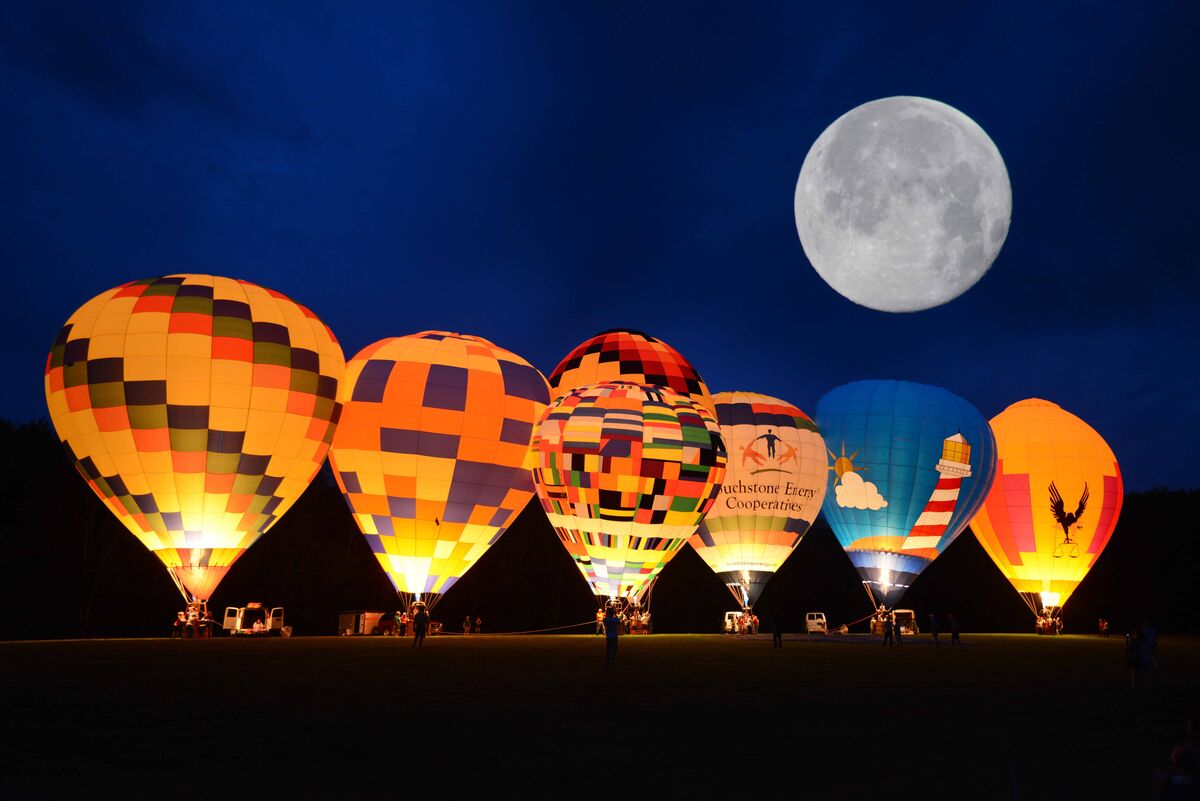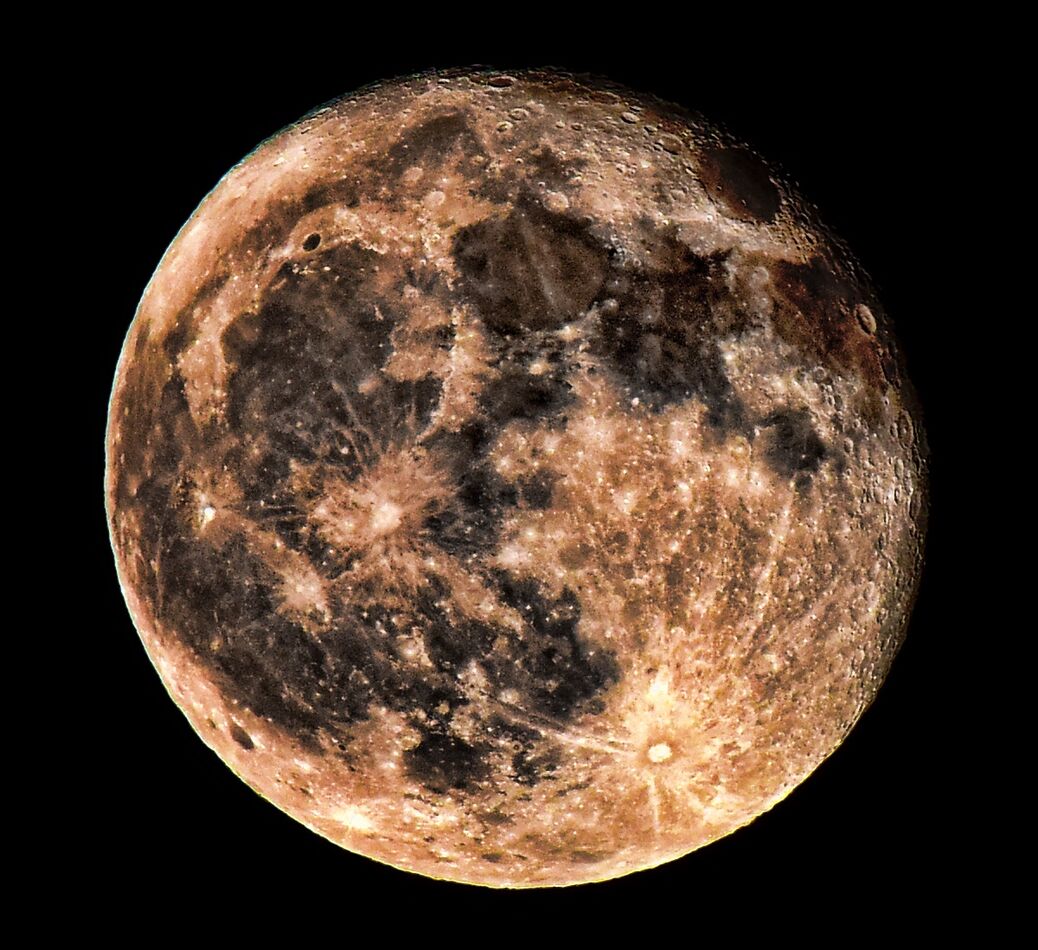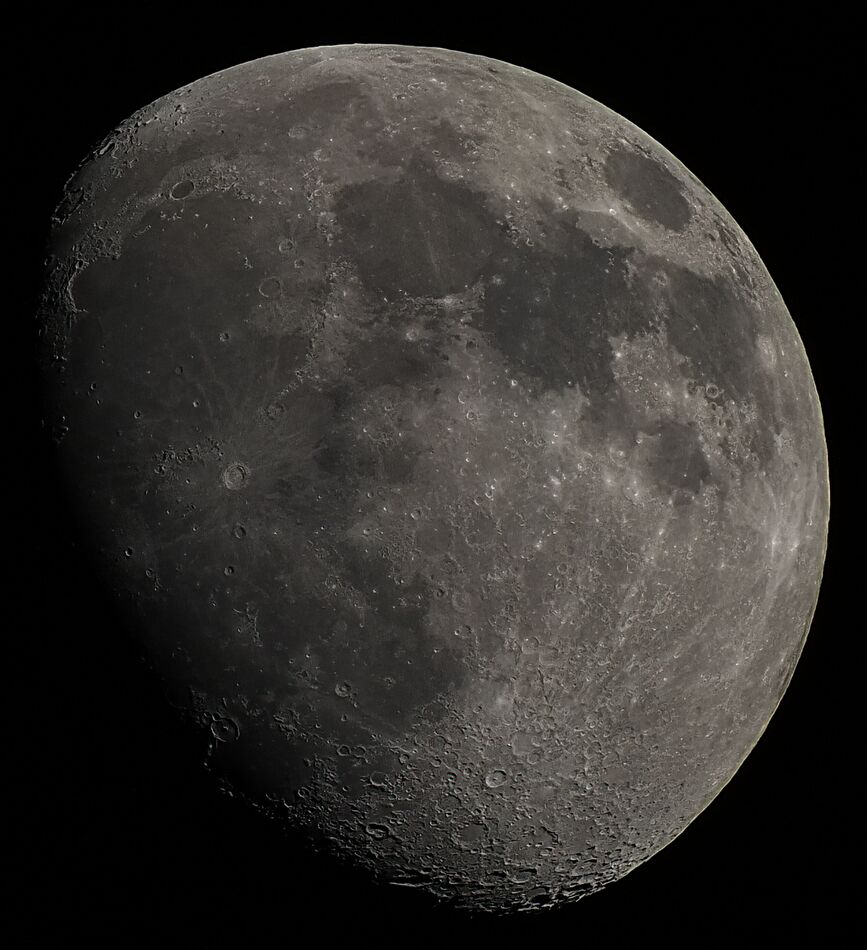How to capture the moon
May 30, 2023 10:09:48 #
Shellback wrote:
Thank you  You beat me to it... it's amazing how on a photographers forum when someone asks for help, they get garbage comments.
You beat me to it... it's amazing how on a photographers forum when someone asks for help, they get garbage comments.
 You beat me to it... it's amazing how on a photographers forum when someone asks for help, they get garbage comments.
You beat me to it... it's amazing how on a photographers forum when someone asks for help, they get garbage comments.
May 30, 2023 11:00:43 #
May 31, 2023 05:42:07 #
billnikon
Loc: Pennsylvania/Ohio/Florida/Maui/Oregon/Vermont
Rhare wrote:
I can never capture the moon as it looks. Any suggestions?
Kodak had it right. A good starting point for the moon is 1/iso at F16.
Because the moon is lit by the sun, it is actually a full day light exposure.
So, lets say you shoot at iso 250, so your BASE exposure would be 1/250 sec. at f16.
or, if you shoot at say iso 500, then your BASE exposure would be 1/500 sec. at f16
Some folks like to shoot the moon when it is low on the horizon and frame it with mountains, trees, houses, buildings etc. etc. etc.
Clouds always make a great composition shooting the moon.
You can vary from this BASE exposure of course to suit your taste.
Kodak used to have what they called, "moons in the refrigerator" when shooting the moon with film. First, you would take images with the moon and record where in the frame the moon appeared, then you would put your film away in the refrigerator until you wanted to take it out again and record a second image on top of that one. The trick was to remember where in each frame the moon appeared. The second exposure would record in the black of the sky, which did not get any exposure at all.
Of course, this moons in the refrigerator is no longer necessary with Digital images. Most camera's allow you to double expose when shooting RAW, consult your camera instructions on double exposures.
With Nikon they have a menu setting that allows you to do this.
Below is an example, I pre exposed the moon in one spot in the sky, about a month later I went to a balloon lighting at a local town. The result is below.
Enjoy and keep on shooting until the end.

May 31, 2023 05:44:26 #
Spot meter exposure (you’re over exposing with anything else, hence your white ball). Use a tripod and probably the longest lens you have.
It’s a lot brighter than you’d think, so start with an exposure around like 1/250 @ f6.3 and iso 400. Suggest using the self timer on the shutter to minimise shake on the tripod and you may want to increase the shutter speed to 1/500th (with suitable changes to aperture or iso of course) to help with that too. Best of luck!
It’s a lot brighter than you’d think, so start with an exposure around like 1/250 @ f6.3 and iso 400. Suggest using the self timer on the shutter to minimise shake on the tripod and you may want to increase the shutter speed to 1/500th (with suitable changes to aperture or iso of course) to help with that too. Best of luck!
May 31, 2023 06:11:44 #
May 31, 2023 06:41:40 #
Stardust wrote:
A really, really large net and a really, really long rope?
Sorry, the devil made me write that.
Sorry, the devil made me write that.

Now that's funny
May 31, 2023 06:45:08 #
billnikon wrote:
Kodak had it right. A good starting point for the ... (show quote)
OUTSTANDING shot!!

May 31, 2023 07:06:38 #
Rhare wrote:
I can never capture the moon as it looks. Any suggestions?
Photographing The Moon - The Following Ideas Were Gleaned From UHH
"For photographing the full moon, start by choosing an exposure based on the Looney f/11 rule. It states that when photographing the full moon, use f/11, ISO 100 and 1/100 second or one over your ISO if you want a different shutter speed. This is similar to the sunny f/16 rule that says to photograph on a sunny day use f/16, ISO 100 and 1/100 second or 1/the same as the ISO number or closest number. For example, at ISO 200 the shutter speed would be 1/200 second. For a half-moon or crescent moon, you will need much less exposure
Moon Shot Tips:
Be sure to have some detail on the moon. Even with a 500mm lens, in reviewing your histogram it can be very hard to see if you have a spike on the far right side. You might have just a sliver on the bright side of the moon that doesn’t have detail. To find out, turn on Highlight Alert to show “blinkies” for overexposure. Reduce exposure as needed until the Highlight Alert stops blinking to provide good exposure."
Moon Shot Tips:
Be sure to have some detail in the moon. Even with a 500mm lens, in reviewing your histogram it can be very hard to see if you have a spike on the far right side. You might have just a sliver on the bright side of the moon that doesn’t have detail. To find out, turn on Highlight Alert to show “blinkies” for overexposure. Reduce exposure as needed until the Highlight Alert stops blinking to provide a good exposure.
or, https://www.timeanddate.com/eclipse/lunar-eclipse-photography.html
Best Wishes,
JimmyT Sends





May 31, 2023 07:29:49 #
Rhare wrote:
I can never capture the moon as it looks. Any suggestions?
I shoot at 400mm, with a slightly darker than sunny 16. Then bracket to preference.
I always handhold seeing as relatively high shutter speed is needed like any daylight shot on Earth during the day.
May 31, 2023 07:47:22 #
Rhare wrote:
I can never capture the moon as it looks. Any suggestions?
Shooting the moon you probably have enough time to try every F/stop and shutter speed combination a camera can provide.
Start with Sunny 16 and work from there. It won't take long to find the exposure you like.
Since the subject will be well illuminated you don't need a high iso.
---
May 31, 2023 08:08:56 #
Just some encouragement. I had the same white ball issue. Even with a tripod. I got frustrated, read UHH and made adjustments as mentioned previously. I got this shot with a 200-500mm at 500mm, handheld leaning against my house. Photo was croppped and processed in Nikon NX2, and Photoshop Elements.
May 31, 2023 08:33:11 #
maranatha wrote:
Have tried several times to shoot moon have given up !!!
Spot meter on the moon, don't use any averaging metering.
May 31, 2023 08:34:13 #
Rhare wrote:
I can never capture the moon as it looks. Any suggestions?
What are you using as the camera?
May 31, 2023 08:36:35 #
Rhare wrote:
I can never capture the moon as it looks. Any suggestions?
I just happened to shoot the moon last night. I used an Olympus OM-D E-M1 Mark II with an adapted Nikon 200-500mm lens at 500mm. The adapter allows me to auto focus. Aperture mode, F8, ISO 200, WB auto, EV -1.3, Spot Metering. Handheld, but I braced the camera on the side of my house. There will be nights where you cannot get a clear image of the moon because of the atmosphere. On those nights I just quit and try another night. I also have a Nikon D610 and use the same settings when shooting the moon with the exception of EV which is usually around -1.0.
May 31, 2023 09:03:05 #
Rhare wrote:
I can never capture the moon as it looks. Any suggestions?
Some links -
https://www.nikonusa.com/en/learn-and-explore/a/tips-and-techniques/tips-for-photographing-the-moon.html?cid=img_en_us:EML:LE:1162019:January:2018-01-07-MOONEmail:na:btn:article1&ET_CID=2603596&ET_RID=363565341&SC_ID=0032400000mYZXzAAO
https://www.lightstalking.com/bite-size-tips-photograph-moon/
http://home.hiwaay.net/~krcool/Astro/moon/howtophoto/index.htm
http://www.ephotozine.com/article/how-do-you-photograph-the-moon--26980
If you want to reply, then register here. Registration is free and your account is created instantly, so you can post right away.


 .
.







